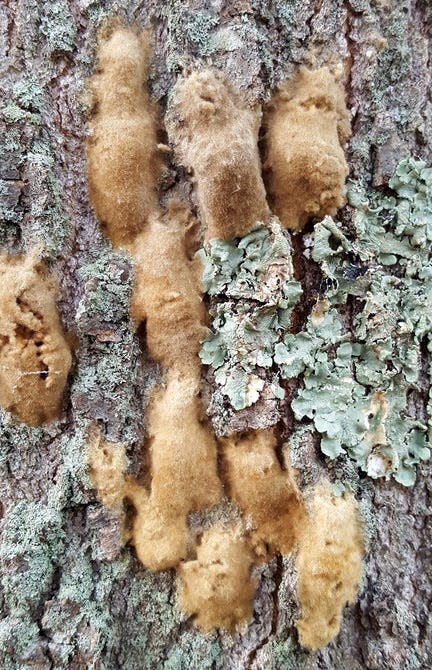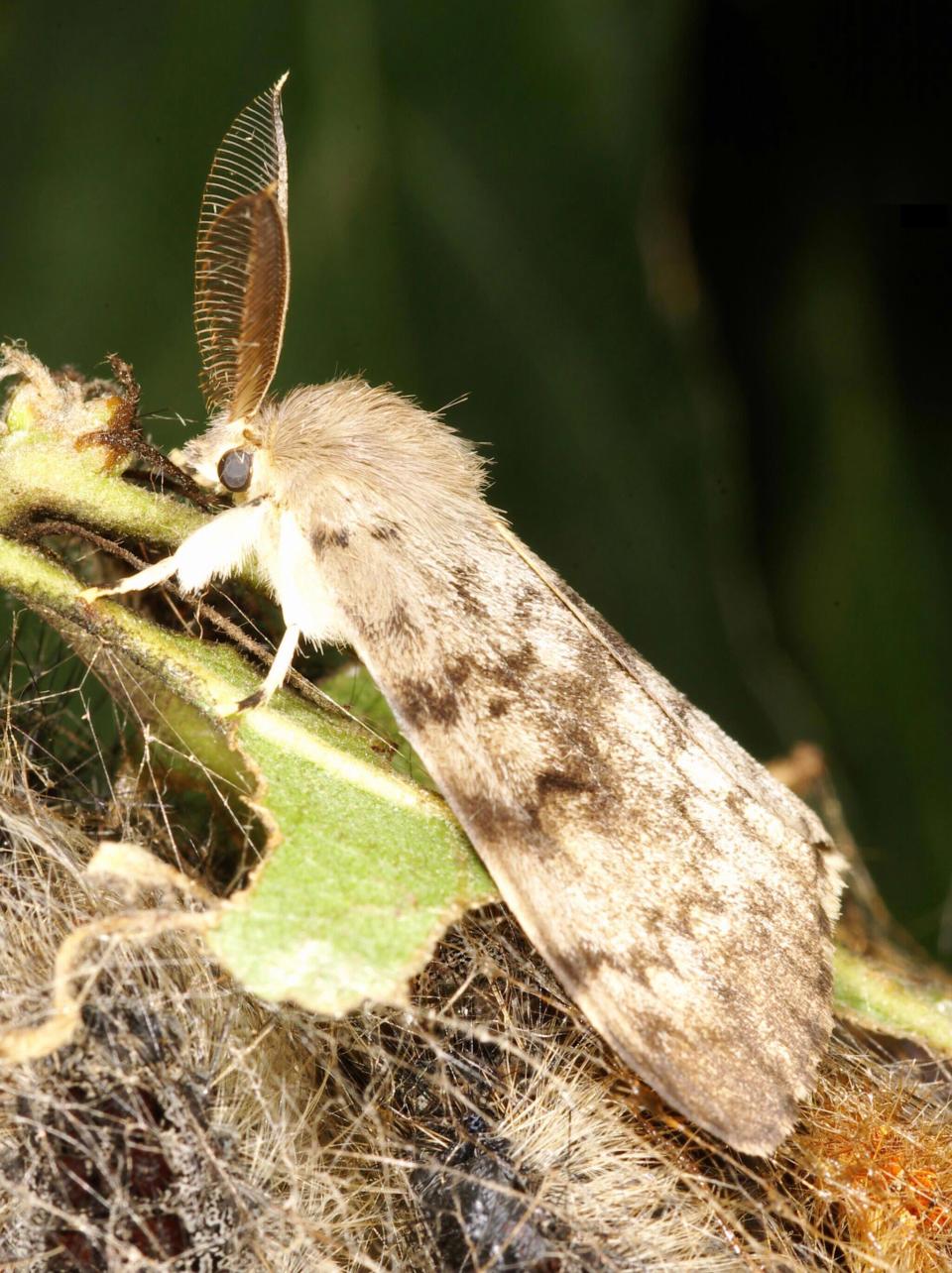Spongy moths are threatening forests. What can you do about it while hiking or camping?

What do you do if you’re out camping or hiking and you spy a spongy moth or its eggs in one of nine northern Indiana counties or in the entire lower peninsula of Michigan, where the U.S. Department of Agriculture is trying to quarantine this destructive pest?
A recent IndyStar story explored the moth’s threat to forests and how Purdue University calls it “the most serious forest defoliator in the United States.” They mostly chew on oak tree leaves but are also known to go after 300 species of trees and shrubs.
Some may know the invasive insect better as gypsy moth, its former moniker until it was recently renamed.
The Tribune reached out to the Indiana Department of Natural Resources for some extra answers.
How to deal with spongy moths
It’s “critical” that humans stop giving the pest a ride to another locale, according to Kristy Stultz, a nursery inspector and compliance officer for the DNR’s Division of Entomology and Plant Pathology. Indiana’s nine quarantined counties include St. Joseph, Elkhart, LaPorte, Porter, LaGrange, Noble, Steuben, DeKalb and Allen. Lake and Whitley counties are in the process of being added to that list.
Importantly, Stultz said, buy firewood only where you are going to use it. Don’t bring wood from home or transport wood to another area where the spongy moth and other pests can hitch rides and spread themselves.

In June, look for spongy moths' pupal casings, which are dark brown and an inch or two long.
During mating season, from July through August, check for egg masses, which can suddenly be laid on anything outdoors, from cars to the underside of lawn chairs. Look for a mass that’s covered with tan or buff-colored hairs.
Now, as it’s autumn, the adults aren’t laying eggs anymore. But you may see egg masses, which is how the moths spend winter.

If you find egg masses on your own property, scrape them into a bucket of soapy water and let them soak for a couple of days before discarding them.
If you’re camping or hiking, Stultz said, don't do anything without the campground’s or property’s management. Or alert them to the exact location so they can deal with it. If they’re not aware of spongy moth issues, refer them to the websites below, along with gypsymoth.IN.gov.
Find links in this story online for:
∎ A national map of where the spongy moth is quarantined.
∎ A checklist, photos and more advice.
Find staff writer Joseph Dits on Facebook at SBTOutdoorAdventures or 574-235-6158 or jdits@sbtinfo.com.
This article originally appeared on South Bend Tribune: Spongy moth or gypsy moth: What to do if camping or hiking

